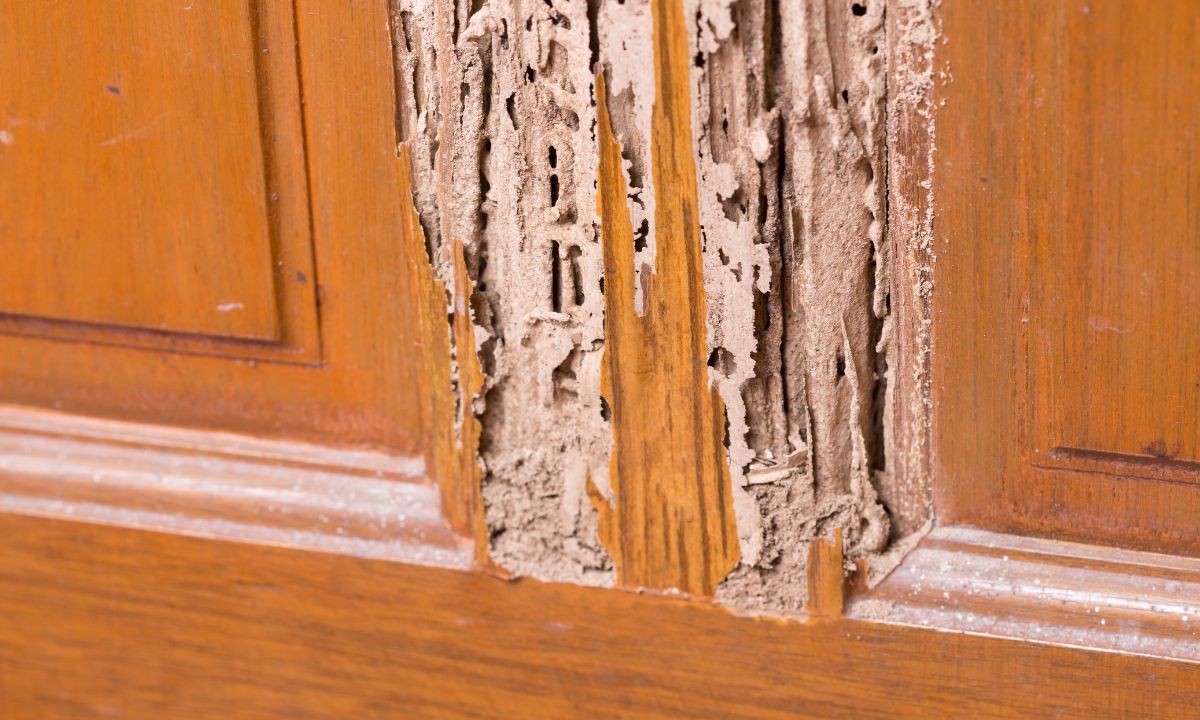The $11,000 Surprise: Why Your Home Insurance Won’t Cover Termite Damage And What Will
If you’ve found this page, you’ve likely just had a chilling realization: the average termite damage repair in Washington State costs between $3,000 and $11,000, and your homeowner’s insurance almost certainly will not cover it.
This isn’t a minor oversight it’s a standard exclusion in nearly every policy. Insurance is designed for sudden, accidental events like a fire or a burst pipe. Termite damage is considered a preventable maintenance issue, happening slowly over time.
Explain exactly why you’re financially on the hook, how to spot damage early, and the single most effective way to protect your largest investment.
The Fine Print: Understanding the Termite Exclusion
- The Reason: Insurance companies argue that termite infestations are preventable through proper home maintenance and regular inspections.
- The Exception: In rare cases, if a termite weakened beam causes a roof to collapse, the collapse might be covered, but the termite damage and beam replacement will not be.
- The Reality: The financial responsibility for termite repairs falls entirely on the homeowner.
How Much Could This Really Cost Me in King County?
Termite damage isn’t just about replacing a few boards. The real cost comes from the extensive work required to fix the hidden structural damage they cause.
| Type of Repair | Typical Cost Range in WA | What It Involves |
|---|---|---|
| Localized Damage | $1,200 – $3,000 | Replacing damaged sill plates, floor joists, or window frames. |
| Significant Structural | $5,000 – $15,000+ | Replacing support beams, subflooring, and extensive wall framing. |
| Tenting & Treatment | $1,500 – $3,500 | Eliminating the active colony, often required before repairs can begin. |
| Total Rebuild Scenario | $20,000+ | In extreme cases where the structure is compromised. |
The 5 Silent Signs of Termites in Pacific Northwest Homes
Since you can’t rely on insurance, early detection is your only financial defense.
- Mud Tubes: Pencil sized tunnels on your foundation, crawl space piers, or floor joists. These are the “subways” termites use to travel.
- Hollow Sounding Wood: Tap on wood surfaces with a screwdriver handle. A hollow echo or papery sound means the inside has been eaten away.
- Frass: This looks like tiny piles of sawdust or coffee grounds. It’s actually termite droppings, often found near kick out holes in wood.
- Discarded Wings: After swarming, reproductive termites shed their wings. You’ll find small, identical wings piled on windowsills or in spider webs.
- Stuck Doors or Windows: As termites consume wood, they produce moisture that causes frames to warp, making doors and windows difficult to open.
The Only Insurance Policy That Actually Works Against Termites
The alternative to home insurance isn’t going without it’s proactive protection.
A professional termite control plan is your true safeguard. It functions as a dedicated “termite insurance policy” that actually prevents the damage in the first place.
- Annual Inspections: Like a yearly physical for your home, catching problems when they are small and cheap to fix.
- Preventative Soil Treatments: Creating a protective barrier around your foundation.
- Monitoring Stations: Early warning systems placed in the ground around your property to detect termite activity before they ever reach your house.
- Repair Guarantees: Many reputable companies like AMPM will cover the cost of repairs for any new damage that occurs after their treatment is implemented.
FAQ: Termites and Insurance in Washington
Q: I just found termite damage. What should I do first?
A: 1.) Document the damage with photos. 2.) Call a licensed termite inspector for a full assessment. 3.) Get a detailed repair quote. 4.) Review your insurance policy with your agent, but manage your expectations.
Q: Are certain homes in King County more at risk?
A: Yes. Older homes pre1970, homes with crawl spaces, and those with wood to soil contact e.g., fence posts touching the house are at significantly higher risk.
Q: What’s the difference between a $500 termite treatment and a $2,500 one?
A: The cheap option is often a spot treatment that only addresses the area you can see. The comprehensive option includes a full inspection, soil treatment around the entire foundation, and often a warranty that includes damage repair.
Don’t Risk a Five Figure Repair Bill
The cost of being wrong is simply too high. A full termite inspection is a small price to pay for the certainty of knowing your home is safe.
Schedule your Free Termite Inspection today. Our certified inspectors will provide a clear, honest assessment of your home’s risk and a transparent plan to protect it.
Call (206) 571 7580 or visit our website to book online.

